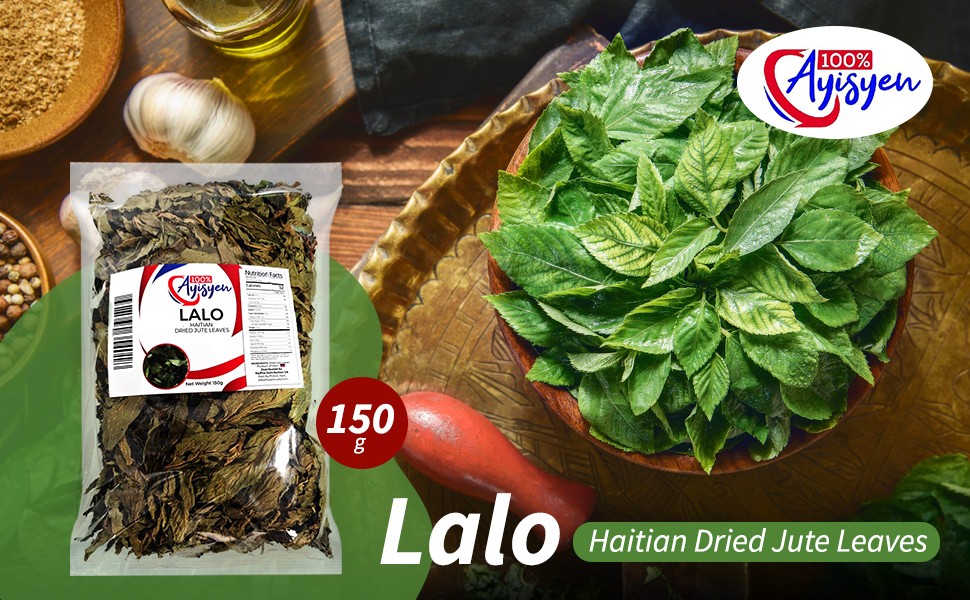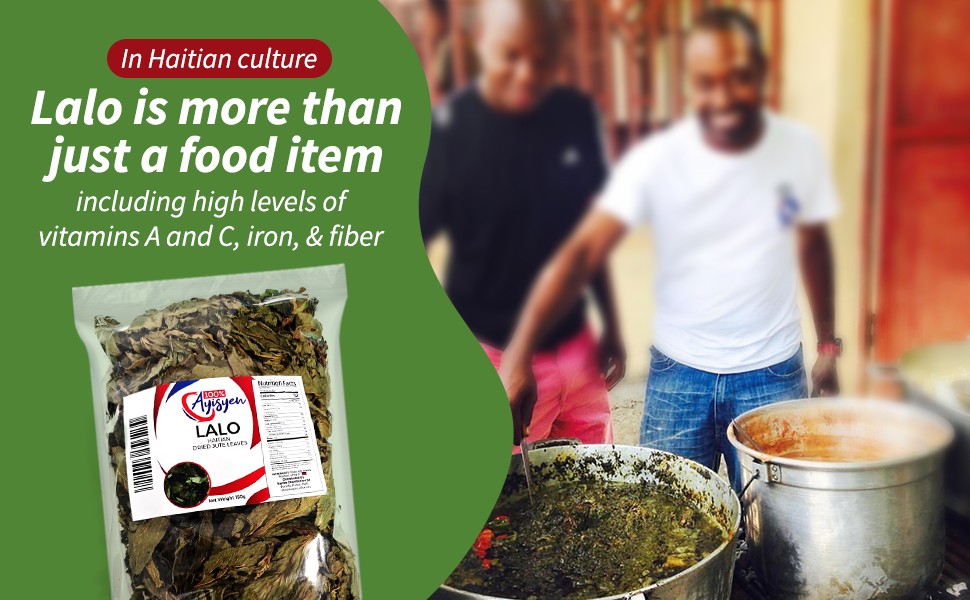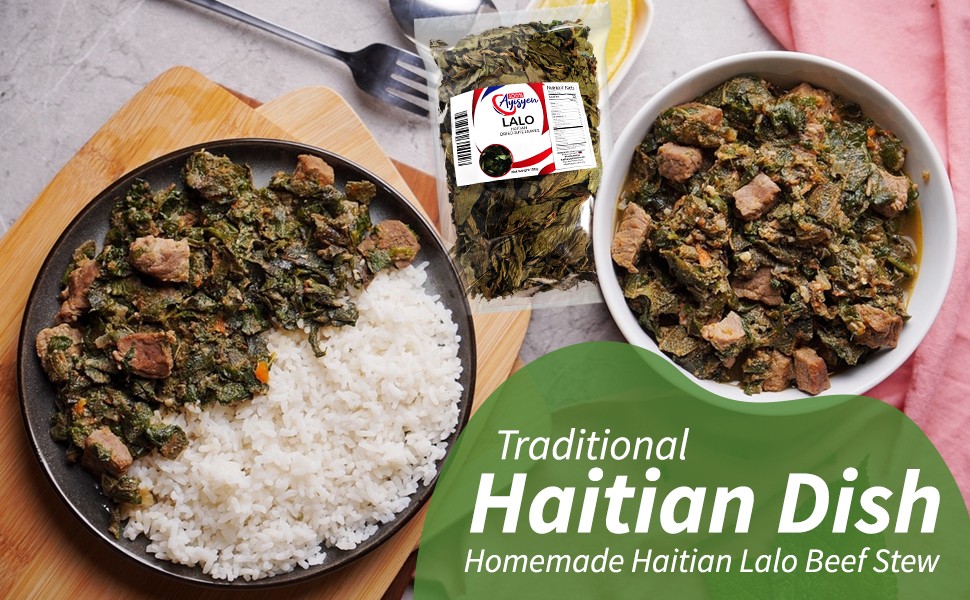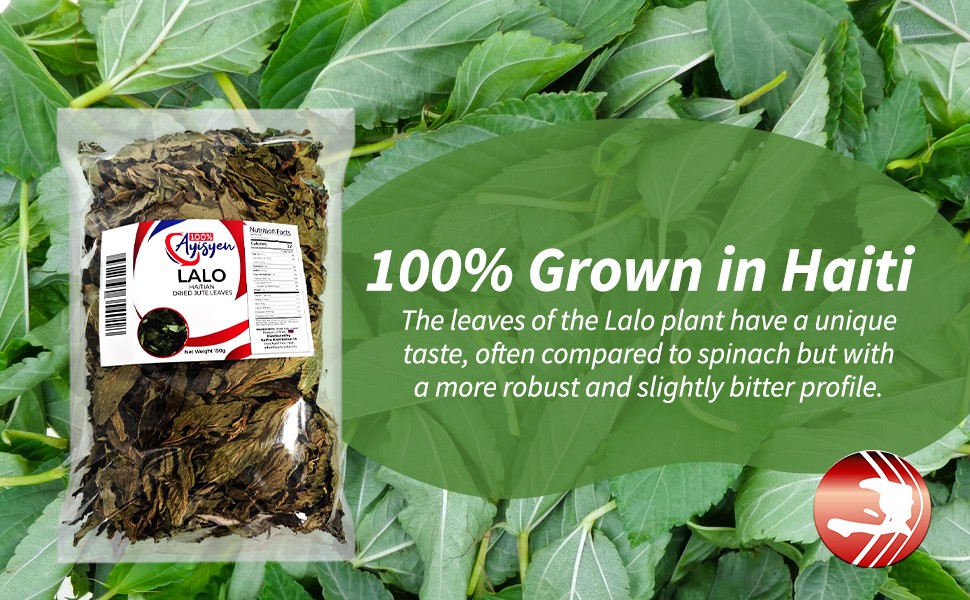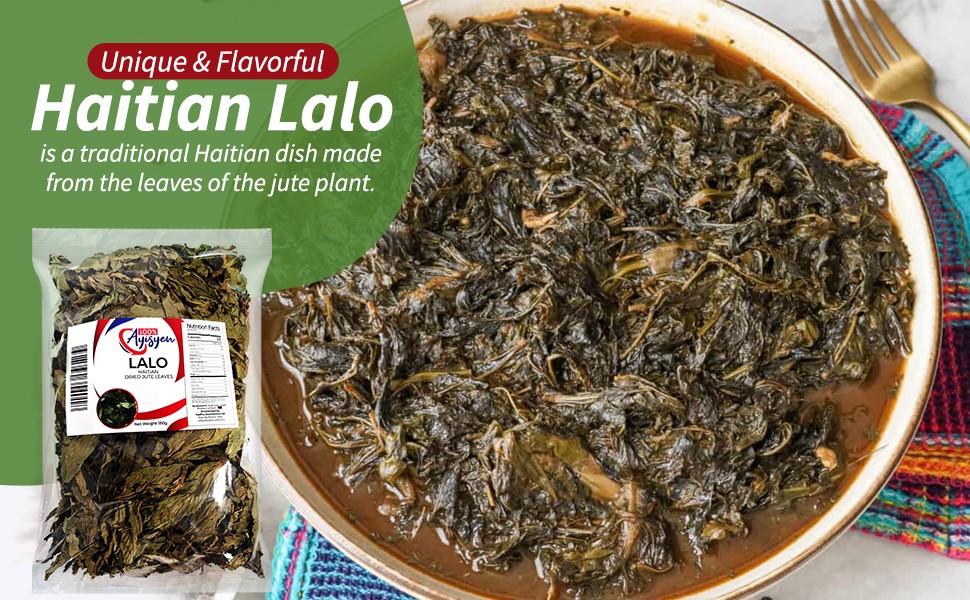Description
Haitian Lalo, also known as Jute Leaves, is a traditional Haitian dish made from the leaves of the jute plant. It’s a popular and nutritious green leafy vegetable, commonly used in Haitian cuisine.
Lalo is known for its distinct flavor, somewhat similar to spinach but with a more hearty and slightly bitter taste. The leaves are typically cleaned, chopped, and then cooked with various ingredients such as garlic, onions, bell peppers, and often meats like crab, beef, or smoked herring. The cooking process usually involves simmering the ingredients until the leaves become tender and the flavors meld together, resulting in a rich, green stew.
In Haitian culture, Lalo is more than just a food item; it’s a part of their culinary heritage. It’s often served with white rice or mayi moulen (cornmeal) and is renowned for its health benefits, including high levels of vitamins A and C, iron, and fiber. Lalo is celebrated for its versatility in recipes and its ability to absorb and complement the flavors of the ingredients it’s cooked with, making it a beloved staple in Haitian households.


